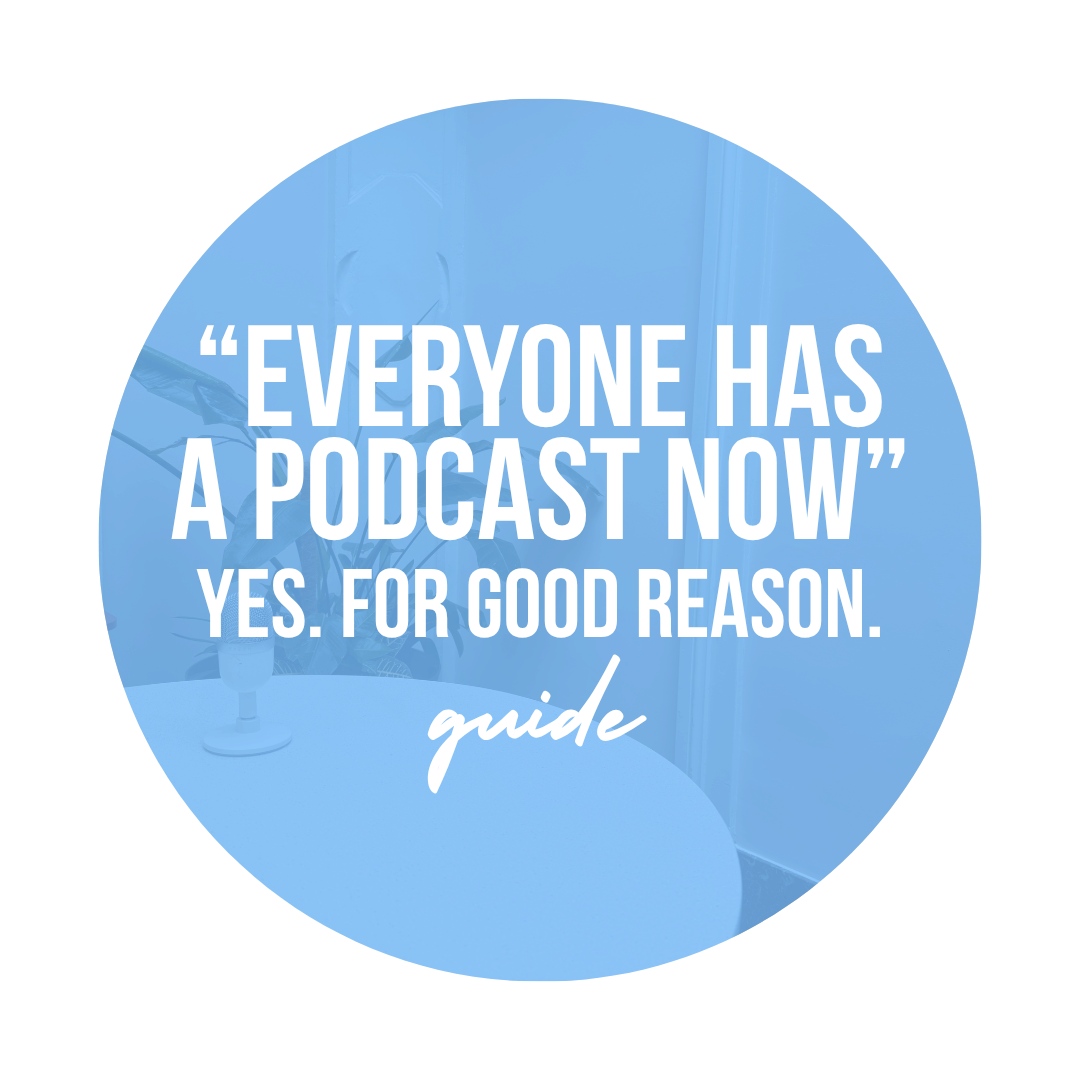I Want to Start a Podcast… But How?
Podcasts are everywhere right now, and for good reason. They are powerful for building your brand, connecting with your audience, and creating content you can repurpose across platforms.
If you are wondering why you might want to start one, I have already covered that in this blog. But this post is about the how — a step-by-step guide so you can plan your podcast without paying an agency thousands before you have even decided what you want.
The truth is, if you can get clear on a few simple things before you reach out to someone like me or another podcast producer, you will save yourself time, money, and stress.
Step 1: Define Your Goals
Before you start picking out mics and cover art, get clear on the why behind your podcast:
Who is your target market?
Are you trying to educate, entertain, establish thought leadership, or attract new clients?
Will this be audio only, or do you want video episodes too?
Having these answers up front keeps your podcast focused and purposeful.
Step 2: Decide on Format and Length
Podcasts are not one-size-fits-all.
Will you host solo episodes, interviews, or a mix?
Are you aiming for short (10–15 min), medium (20–30 min), or long-form (45+ min)?
How often will you release new episodes: weekly, biweekly, or monthly?
Consistency matters more than cranking out episodes daily. Pick a pace you can realistically keep up with.
Step 3: Choose Your Tools and Hosting Platform
Once you have your vision, it is time to look at the tech side:
Recording tools: StreamYard, Riverside, or Zoom
Hosting platforms: Buzzsprout, Podbean, or Libsyn
Editing software: Descript, Audacity, or GarageBand
Tip: Most of these tools have free trials. Play around and see what feels intuitive for you.
Step 4: Plan Your First 5 Episodes
Do not overcomplicate this — you just need a loose roadmap:
A short intro episode to share who you are and why you started the podcast
Three to four core topic episodes your audience will care about immediately
Make sure your topics tie directly to your brand and the needs of your audience
Step 5: Then Call in the Experts
Once you have nailed your goals, format, and tools, you are ready for someone like me to help with:
Branding and cover art
Account setup
SEO optimization
Editing and post-production
Distribution and promotion
The difference is that you will be walking in with a plan, not paying someone to figure it all out for you from scratch.
Podcast FAQs
How much does it cost to start a podcast?
You can start with under $200 if you keep equipment and software simple.
What is the easiest way to start a podcast for free?
Use your phone, free editing software like Audacity, and a free hosting tier on platforms like Podbean.
Can I start a podcast without expensive equipment?
Yes. A USB mic, free editing tools, and a quiet space are enough to get started.
Do I need a podcast script?
Not necessarily, but having bullet points or an outline keeps you on track.
Should I start with video or audio only?
If you are comfortable on camera, go video. It gives you more content to repurpose. If not, start audio-only and add video later.
What is the best microphone for beginners?
The Audio-Technica ATR2100x or the Blue Yeti are solid, affordable options.
How do I get my podcast on Spotify and Apple Podcasts?
Submit through your hosting platform. Most have built-in distribution tools.
How long should my episodes be?
As long as they need to be to provide value, but most podcasts average 20–40 minutes.
Can I run a podcast alone?
Absolutely. Just remember it is more work without a co-host or team.
Do I need a niche to start?
It helps. The clearer your topic, the easier it is to attract the right audience.
Final Thoughts
Starting a podcast does not have to be expensive or overwhelming. With a little planning and clarity, you can go from “I have been thinking about it” to hitting “record” in a matter of weeks.
If you want my full podcast launch checklist and tool recommendations, you can download it here.
Free Download!
Click here for my podcast starter pack.

